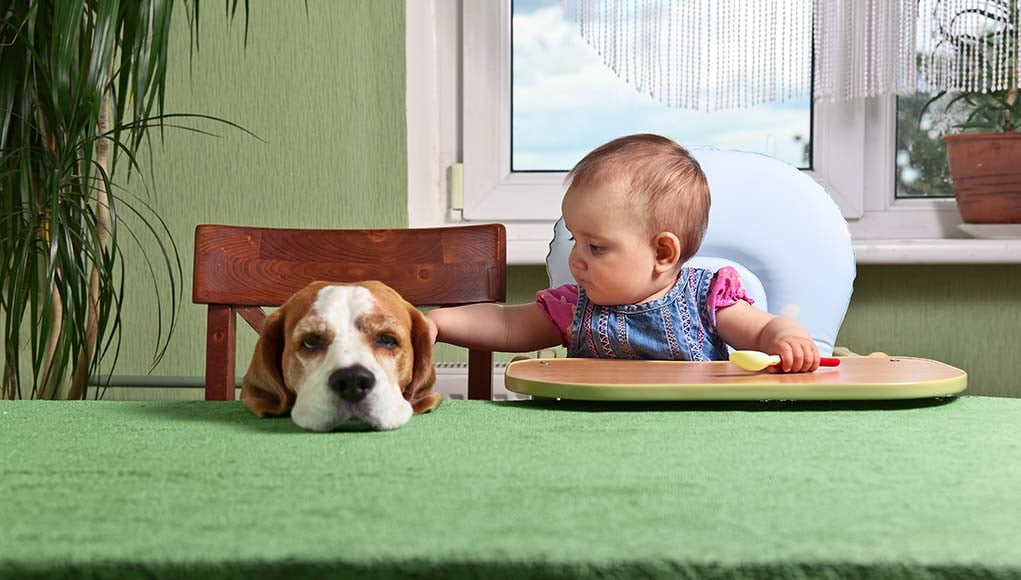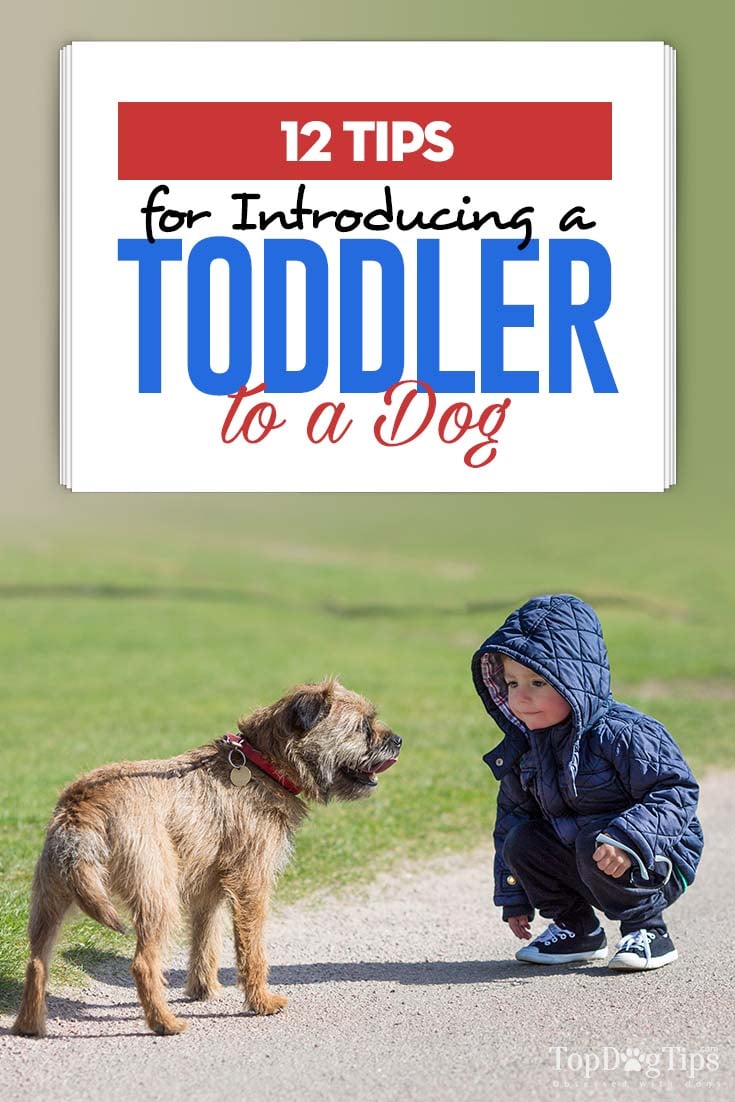Dogs and babies were long considered to not be a good fit. There was a myth that having a dog at home may cause your baby to become allergic, but that's not true. Recent studies determined that it’s actually the other way around – children that grow up with dogs are healthier, thus more families are looking into adopting dogs while raising kids.
But now there's another issue: how do you safely introduce a toddler to a dog and make sure the two get along well? Your concern isn't only for the two to like each other, but also to make sure that there will be no accidents between them. Here are some tips on how to introduce a baby to your dog.
ALSO READ: The Guide to Introducing Dogs to Newborns
1. Teach Your Dog Basic Obedience
If adopting an older dog, particularly of larger size, before the introduction takes place, you must know that they're good with the basic obedience commands. Most of the work will actually need to be done before the baby is born, or before the pet is brought home, or before you make the introduction.
2. Teach Your Dog the “Go Away” and Other Commands
Other than basic obedience, there are a few useful commands that you can teach your pup regardless of whether you’re expecting a baby or not to make sure they're both safe. Training them to obey your commands will clear your communication.
When you’re having a baby, several commands are especially important. Commands such as “Go away”, “Sit”, “Quiet”, and others will make it much easier to manage your dog’s behavior around the child.
3. Nursery is Off Limits, Unless Explicitly Allowed
When you set up the nursery room, train the dog not to go there without you. For this, you can use a pet gate but it’s generally better to use boundary training instead. Simply teach your dog (even before the baby arrives) that this room is off limits unless you say otherwise.
4. Introduce the Dog to Most Baby Items
You've probably done your shopping, so there will be a lot of baby toys and other items that your dog haven't seen or smelled before. Most baby toys will instantly grab your dog’s attention, so you must teach your pet that these are not their toys.
Same goes for baby clothes, towels and other things – all of this is off-limits, and the dog needs to have their own stuff. Also, introduce your pup to toys and items that may scare them at first, such as extra loud or “flashy” baby toys.
5. Introduce Your Dog to the Baby’s Smell Beforehand…
After the baby is born, take an item from the hospital – a blanket, a toy or something similar – that has the baby’s smell. Take that item back home before the mother and the baby come back from the hospital and introduce the dog to the baby’s smell. Teach your pooch that the smell is good and is not something unfamiliar or foreign.
6. …and the Baby's Sounds
Babies can be quite noisy, especially in the little hours of the night. Sometimes, this will alert or even scare the dog. To avoid the problem, play your dog some recordings of other babies, so that your pet understands that this will be the norm around the house.
7. Remind the Dog About Family's Hierarchy
This is a generally essential tip that is even more important when you’re expecting a baby. Dogs, like their wolf ancestors, follow a hierarchy. It's their instinct. And some dogs tend to be competitive when it comes to the family’s hierarchy. Many even view themselves as the “Alphas” of the household, due to bad and inadequate training.
Improperly established social circle and hierarchy may result in aggression from the dog toward humans. In fact, studies show that most aggression accidents happen between dogs and children. Thus, it's crucial for your dog to understand that they're allowed to act out with jealousy and aggression when you spend more time with the baby.
8. Spread Around Your Attention Properly
Dogs love their owners, and they tend to get jealous. As a result, some owners make the mistake of giving the dog extra attention when the baby is asleep. They think this will make their pet happier and feel more loved. And while you certainly need to give your dog that attention to avoid tantrums, it’s important to do it while the baby is awake.
You don’t want to inadvertently teach your pup that the baby being awake is “a bad thing”. On the contrary, you want your canine to be excited and happy when the toddler is awake and hanging about, and to always view the baby’s presence as a good thing.
9. Keep the Dog on a Leash During the First Introduction
Yes, all owners love and trust their dogs, but at the end of the day, our loyal companions are still animals that follow instincts. Sometimes, you can't predict their actions. Bringing home a baby is a new even, and you don't know how your pup may react. So no matter how well you’ve prepared your dog, it’s always wise to keep them on a leash at first.
10. Maintain the Right Order for Introduction
When bringing the baby home for the first time, walk inside by yourself at first, and greet your dog. Don’t just storm in with the loud baby and startle your pet. Instead, walk in by yourself, give your dog the attention they crave and let them settled down. Show them that everything is fine, and then let your spouse walk in with the baby.
11. Keep the Progress Going, but Slowly
During the initial introductions, never, ever push the baby into your dog’s face as a greeting. Instead, let your pup observe from a distance at first, then allow them to get closer, then let them sniff the baby’s feet (while leashed).
Baby step by baby step, introduce the two future friends slowly and carefully. Don’t create the atmosphere of “danger” and “fear” either, as your pooch will sense those emotions. There's absolutely no need to rush this process.
12. Teach Your Child How to Behave Around the Dog
Infants and toddlers can’t be taught too many things at first, but they can be taught some things. Just as you need to make sure that your pet respects the baby, you also need to ensure that your baby respects the dog.
As the two grow together, slowly begin teaching your child how to be around the dog. Explain to them that the dog is not a toy and they deserve respect because it’s guaranteed that kids will view dogs as such at first. Tail-pulling and ear-pulling, as well as a lot of other things are a big no-no.
13. Teach Yourself How to Better Understand Your Dog
We spend a lot of time teaching our dogs to understand our language, but we often forget to learn to understand the dogs’ language as well. And while this isn’t the end of the world when it's just you and your pooch, when you have a toddler at home, it’s essential that you’re very familiar with your dog’s body language.
READ NEXT: 14 Safety Tips for Adopting a Dog When You Have Kids














